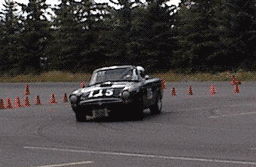Keeping Your Cool in a Tiger

An Article by Dan Walters
September, 2001
Preface: Dan Walters is a well known figure in the Tiger and Alpine communities. He has professionally prepared, and repaired Tigers and Alpines all over the Greater Los Angeles area, is currently CAT president, and has been an active participant in most Tiger events, and is a winning competion driver. His knowledge of our cars is remarkable, and his workmanship is widely respected. While Dan is a very busy person, he has again taken the time to document his esperience with Cooling Issues in a Tiger, and his personal recommendations on how to end up with a satisfactory system.
Thank you, Dan, for your many contributions.
Editor
Page 1
Introduction:
.... It's no secret that Tigers have problems with their cooling systems. However, there seems to be a secret that a lot of old car owners don't know about. This has to do with KEEPING the cooling system working as well as possible. The secret is keeping the cooling system clean. The main focus is the radiator. It can be alarming how fast a radiator becomes partially plugged from "stuff" inside the cooling system..
....Even if you are meticulous about putting distilled water in your cooling system and keeping a fresh mix of antifreeze in the system, you could have problems with the radiator plugging up. Chances are you have not owned the car from day one and 30 years of history tends to generate cooling system "stuff" to plug the radiator. It's interesting that a Tiger with a new (not rebuilt or remanufactured, NEW) engine and radiator can continue to generate "stuff" that gets caught in an upper radiator hose filter.
....Cooling system filters have been available for years but have not received much publicity. It seems there are two schools of thought among people aware of cooling system filters. One group uses them routinely. The other group thinks they are unnecessary or not worth the hassle. The biggest problem with the cooling system filter is that the more it is needed, the more maintenance is required. High efficiency radiators tend to have smaller tubes that are easily plugged by debris circulating in the cooling system. It's a simple case of choosing which you would rather clean, the radiator or a filter
....You can usually get an idea of the degree of radiator plugging by simply removing the top radiator hose and look at the end of the tubes through the top hose opening or feel the ends of the tubes with a finger. If your radiator is in need of cleaning, this is the time to decide if your old radiator is worth cleaning or if the money is better put toward a new radiator or core. More about new radiator choices in a future shop note, stay tuned.
....If you decide to clean your old radiator, don't fall for a "flush out" procedure at a radiator shop. What you want is a "rod out" procedure. It is a good idea to insist on seeing the radiator with the inlet tank removed before cleaning to verify the degree and type of plugging and to verify that you get the job that you pay for. Also it's a good idea to witness an air pressure test of your radiator BEFORE repair to verify the condition of the radiator. Don't be shocked if your old radiator leaks air where it never leaked coolant! Also beware of the damage a "rod out " procedure can do. High efficiency radiators are made of very thin tubes that are easily damaged. It's up to the radiator shop to clean the radiator without damaging it and it's up to you to verify the work to be sure if you NEED a new radiator or radiator core.
 **
**
